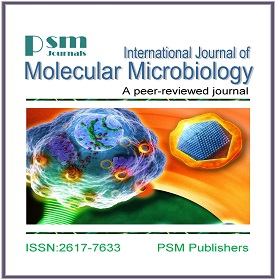Ceftazidime Resistant Bacteria in Clinical Samples: Do We Need New Antibiotics?
Abstract
EDITORIAL:
Antibiotic resistant strains and species referred to as ‘’super bugs’’ contribute to emergence of disease. Antibiotic resistant bacterial infections have become a threat, in particular in developing countries. Incidence and mortality from infectious diseases have increased during the past decade. Antibiotic resistance causes biological cost by reducing fitness of resistant strains, which can minimize the spread of resistant bacteria. Additional mutations also aid in the survival of resistant bacteria (Topp et al., 2013). Microbes that are resistant to multiple antimicrobials are called multidrug resistant (MDR) (Iqbal et al.,2015a). Antibiotics are among the most commonly prescribed drugs in hospitals and in developed countries about 30% of the hospitalized patients are treated with these drugs (Shankar et al., 2003).
In this issue, Saleem et al. report the Ceftazidime resistance in clinical isolates of bacteria. The proportions of resistant isolates to Ceftazidime ranged E.coli56.31%, Staphylococcus aureus 6.84%, Pseudomonas aeruginosa 4.21%, Klebsiella 1.57%, and Proteus sp. 1.05%. Our data showed that female patients had the highest level of resistant bacteria compared to males. That significantly more resistant bacteria were found in female clinical samples correlates with a higher susceptibility of infection in females than males, due to the physiological and anatomical differences.
Ceftazidime is a third-generation cephalosporin that was introduced into clinical use in the 1980s because of its verified broad spectrum activity against Gram-positive cocci and Gram-negative bacilli, including Pseudomonas aeruginosa (Turner, 2009). The emergence of Ceftazidime-resistant bacteria must be considered one of the most frightening consequences of microbial evolution in the last 2 decades. The physicians prescribe broad spectrum antibiotics without antibiotic susceptibility test. There is no systematic national surveillance of antibiotic resistance and insufficient data is available to quantify the problem (Abdul et al., 2008). Resistance to Ceftazidime demonstrated that more consumption of a specific antibiotic leads to sustainability of resistance against it. These resistant isolates can be further studied in terms of their multidrug resistance and resistance to other antibiotics to find a suitable antibiotic or combinations of antibiotics for the treatment of infectious diseases. Plant derived products can be tested to determine antibacterial activity (Hussain et al.,2016; Iqbal et al., 2015b; Shahzad et al., 2017) that can be used to treat infectious diseases.
Although well conducted, there are some limitations to the present work. The molecular methods can be employed to detect antibiotic resistance. Moreover, the types of bacteria tested were limited to 5 strains. More attention is needed to recognize and measure trends in resistance internally. There is an immediate need to step out and control these pathogenic infections and lest effectiveness of antibiotics.




